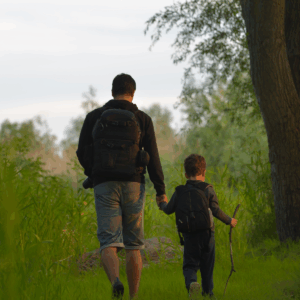If you can still laugh at these seven things after 60, your spirit is younger than most 30-year-olds
I’ve noticed something funny about getting older: The world thinks you’re supposed to grow serious, polite, and predictable as if decades of living should squeeze the grin right off your face.
Nonsense—if anything, reaching our sixties is the perfect time to loosen up and laugh more.
Laughter keeps our perspective nimble, helps us connect across generations, and—maybe best of all—teaches our kids and grandkids that life is easier to carry when you’re smiling at it.
Here are seven things I still laugh at. If you do too, I’ll wager your spirit’s livelier than many folks half your age!
1) Laughing at yourself
Do you chuckle when you catch your reflection and notice your shirt’s inside out… again?
Good—that’s emotional flexibility in action.
I’m the guy who’s walked two blocks with his reading glasses perched on his head, patting pockets like a detective searching for clues.
Years ago, I’d have grumbled about “losing it.” Now I grin, flip the glasses down, and carry on.
Self-teasing is not self-insult.
It’s a warm wink that says, “I’m human, and that’s okay.”
Related Stories from The Artful Parent
When we can laugh at our quirks—the overpacked day bag, the names that play hide-and-seek in our memory—we stop expecting perfection from ourselves and everyone else.
2) Laughing at plans that go sideways
I used to worship a tight schedule.
Color-coded calendars, to-do lists so crisp you could slice bread with them, then life—with its huge sense of humor—introduced me to grandparenting.
Picture this: Picnic packed, park chosen, and weather perfect.
We arrive and realize someone (not naming names) grabbed the art supplies but forgot the sandwiches.
Cue the giggles!
- The art of strategic vulnerability: 9 ways to share just enough to connect without oversharing - Global English Editing
- I married into a wealthier family – here are 7 lower-middle-class habits I had to explain (and some I kept) - Global English Editing
- The art of not becoming that older person: 7 social habits to drop before everyone starts avoiding you - Global English Editing
We made a meal out of apple slices, peanut butter, and a lot of imagination.
The kids still talk about “the paintbrush picnic.”
When you laugh as plans unravel, you show young eyes that flexibility beats fury.
Families don’t need flawless itineraries; they need adults who stay playful when the wind changes.
Isn’t that the kind of resilience we want our children to borrow?
3) Laughing at technology (and yourself using it)
Tell me you haven’t tried to answer a video call and accidentally turned the camera toward your ear.
I once gave my granddaughter a ten-minute close-up of my left nostril.
She laughed so hard she snorted, which set me off.
We had tears in our eyes before we even said hello.
If tech makes you huff, you’ll feel old fast; if tech makes you chuckle, you’ll stay curious.
Instead of pretending we “should already know this,” I ask the kids to teach me.
It flips a switch—they get to be the expert, I get to be the student, and we laugh through the fumbles.
That shared laughter turns gadgets into bridges, not barricades.
4) Laughing at the body’s oddities

Let’s talk about creaks, groans, and mysterious sounds.
The orchestra lives in my knees now.
If I stand up too quickly, I produce a noise that scares the cat and impresses the grandkids.
We can treat every new peculiarity like a tragedy—“This is the end!”—or like a punchline—“Ladies and gentlemen, welcome to today’s performance of the Pop-Snap Symphony.”
Guess which attitude gets you moving back out the door for that walk?
I don’t make jokes to minimize real health issues; I make them to keep fear from running the show.
Humor helps me keep showing up for the habits that matter: Stretching, sleeping, drinking water, and—yes—playing tag in the park until I’m the one calling for time-out.
When kids see us chuckle at the indignities of aging, they learn that bodies change and dignity stays.
That’s a gift they’ll unwrap again and again across their own lives.
5) Laughing at being wrong (especially out loud)
Ever insisted that the capital of Australia is Sydney, or told a teen the lyrics to “their” song were something wildly different and wildly embarrassing?
I have!
The room goes quiet, then I smile and say, “I was wrong,” and I laugh.
If you can admit error with a grin, you keep your mind young.
You also become someone safe to talk to.
Kids, partners, and friends learn that being mistaken is not a crime—it’s a conversation starter.
The opposite approach—doubling down, sulking, changing the subject—calcifies us.
We become brittle, and young people sense it.
Our families don’t need brittle elders; they need flexible ones who can pivot, apologize, and make room for new ideas.
6) Laughing at small annoyances that used to erupt into anger
A spilled smoothie on the car seat, a neighbor’s leaf blower at 7 a.m., and the printer that chooses a deadline to pretend it has never seen paper.
Will these things matter in a week? Rarely, but they can hijack a morning if we let them.
These days, when the blender lid goes rogue, I look at the pink Jackson Pollock on my kitchen cabinets and grin: “Well, that’s one way to redecorate.”
A quick laugh gives me a breath.
In that breath, I choose who I want to be.
Children watch those micro-choices—they model them.
If we jump straight to outrage, they’ll learn outrage; if we jump to perspective, they’ll learn perspective.
Simple as that!
7) Laughing with kids (not at them) when chaos visits
If you spend time with children—yours, your grandkids, the neighbors’—you know chaos.
Crayon murals in surprising places, shoes that vanish into a wormhole seconds before you need to leave, and a toddler who insists the moon is following your car and must be invited to dinner.
My instinct used to be control: Straighten up, hush down, keep everything tidy.
However, some of the best memories live inside mess and noise.
Last month, we tried to bake cookies.
Half the flour hit the bowl; the other half snowed onto the dog.
My granddaughter burst out laughing, pointed at our flour-dusted companion, and yelled, “It’s a sugar wolf!” I could have scolded.
Instead, I laughed with her.
We cleaned up together, we ate lopsided cookies, and we added “sugar wolf” to the family dictionary.
Laughing with kids tells them they’re delightful even when life is not polished.
It doesn’t mean anything goes—boundaries matter—but it does mean we hold those boundaries with warmth.
Joy and structure are not enemies.
In fact, kids follow rules better when the adults enforcing them are generous with humor.
A closing thought
Getting older has given me more laugh lines, and I treasure them.
They’re maps of moments I chose light over gloom, curiosity over pride, connection over control.
The next time life throws you one of its little curveballs—your phone autocorrects “on my way” to “own my yams,” the dog crashes the Zoom call, the picnic becomes a paintbrush buffet—see if you can smile first.
You might be surprised how much younger you feel.
What’s one thing you’ll choose to laugh at today?



